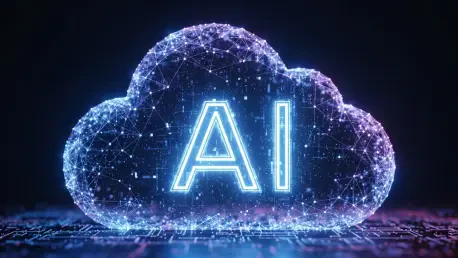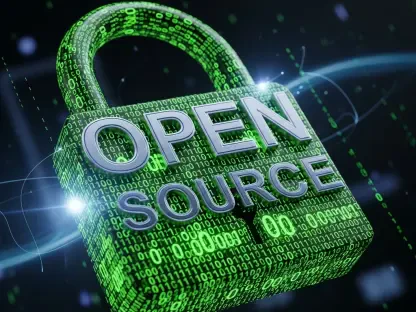In the fast-paced realm of cloud-native application management, the complexity of Kubernetes environments continues to challenge even the most seasoned site reliability engineers (SREs). With organizations deploying thousands of microservices and grappling with scalability issues, the demand for streamlined automation and intelligent workflows has never been more pressing. Enter Devtron, an open-source platform tailored for Kubernetes SRE workflows, which promises to revolutionize how teams handle these intricate systems through its latest 2.0 version featuring AI-driven capabilities.
Understanding Devtron: A Kubernetes SRE Powerhouse
Devtron stands as a robust open-source solution engineered to simplify site reliability engineering within Kubernetes ecosystems. By integrating seamlessly with well-known tools such as Argo for continuous delivery, Helm for application packaging, and Flux for dependency management, the platform offers a unified control plane that enhances operational efficiency. Its design addresses the unique hurdles of managing modern cloud-native applications, from deployment to monitoring, under a single interface.
The emergence of Devtron reflects a critical need in the DevOps landscape where traditional tools often fall short in handling the dynamic nature of Kubernetes workloads. Its focus on automation and integration positions it as a vital asset for teams aiming to reduce operational overhead while maintaining system reliability. This relevance is particularly pronounced as enterprises increasingly adopt cloud-native architectures at scale.
Key Features of Devtron 2.0
AI Agents for Workflow Automation
One of the standout innovations in Devtron 2.0 is the incorporation of AI agents that autonomously execute pre-approved runbooks. These agents are designed to bolster system resilience by identifying and resolving issues with minimal human intervention, effectively eliminating blind spots in operations. Their ability to interact via natural language further simplifies complex tasks for SREs.
This feature also introduces a “single pane of glass” interface, providing a centralized view of all workflows. Such consolidation enables teams to monitor and manage systems more effectively, cutting down on the manual toil that often burdens SRE roles. The result is a shift in focus toward strategic planning and security rather than repetitive troubleshooting.
KubeVirt Support for Diverse Workloads
Devtron 2.0 extends its versatility through support for KubeVirt, an open-source framework that facilitates running monolithic applications on Kubernetes via kernel-based virtual machines. This capability allows organizations to manage a broader spectrum of workloads without needing separate infrastructure setups. It bridges the gap between legacy systems and modern cloud-native environments.
The significance of this feature lies in its adaptability, enabling teams to transition older applications into Kubernetes clusters without extensive refactoring. For industries with mixed technology stacks, this compatibility ensures a smoother migration path and reduces dependency on disparate systems, fostering a more cohesive operational framework.
FinOps Tools for Cost Optimization
Addressing the escalating concern of cloud expenditure, Devtron 2.0 introduces FinOps tools aimed at providing deep insights into Kubernetes-related costs. These tools help teams track resource usage and identify areas for optimization, a critical need as cloud budgets often spiral out of control. Visibility into spending patterns empowers better financial decision-making.
By embedding cost management directly into the platform, Devtron ensures that SREs and DevOps professionals can align operational efficiency with fiscal responsibility. This integration is particularly timely given the industry-wide push toward sustainable cloud spending, making it a valuable addition for budget-conscious organizations navigating expansive Kubernetes deployments.
GPU Support for AI Workloads
Recognizing the growing reliance on AI-driven applications, Devtron 2.0 includes support for graphical processing units (GPUs) within Kubernetes clusters. This enhancement caters to teams leveraging intensive computational resources for machine learning and data processing tasks. It positions the platform as a forward-thinking solution for cutting-edge workloads.
The inclusion of GPU support underscores Devtron’s commitment to staying ahead of technological trends, ensuring that users can harness the full potential of their hardware for specialized applications. For sectors like research and development, where AI workloads are commonplace, this feature significantly boosts the platform’s appeal and utility.
Emerging Trends in SRE and Platform Engineering
The evolution of Devtron mirrors broader shifts in the SRE and DevOps fields, particularly the move toward platform engineering to manage intricate workloads at scale. This trend emphasizes creating unified systems that abstract underlying complexities, allowing smaller teams to oversee expansive application portfolios. Devtron’s design aligns closely with this paradigm, offering a cohesive environment for diverse operations.
Automation remains a cornerstone of this transformation, especially as the pool of Kubernetes-savvy SREs remains limited. By embedding intelligent tools, the platform mitigates skill shortages, enabling less experienced teams to achieve expert-level outcomes. This democratization of expertise is poised to reshape how organizations structure their technical teams over the coming years.
A parallel trend is the industry’s focus on accessibility, ensuring that complex systems are manageable without deep technical knowledge. Devtron’s user-friendly interfaces and AI enhancements contribute to this goal, reducing barriers to entry for Kubernetes management. Such advancements signal a future where operational tools prioritize ease of use alongside raw functionality.
Real-World Applications and Adoption of Devtron
Devtron’s impact is evident in its widespread adoption, with over 21,000 installations and nine million deployments recorded to date. Spanning various industries, from fintech to healthcare, the platform supports organizations in building and maintaining robust cloud-native applications. Its ability to handle large-scale deployments makes it a preferred choice for enterprises with demanding requirements.
Specific use cases highlight Devtron’s versatility, such as enabling rapid application rollouts in e-commerce or ensuring uptime for critical healthcare systems. These real-world implementations demonstrate how the platform translates theoretical capabilities into tangible benefits, streamlining processes that would otherwise require extensive manual effort or fragmented tooling.
The open-source nature of Devtron further fuels its adoption, as community contributions continuously refine its features. This collaborative model ensures that the platform remains responsive to user needs, adapting to diverse environments and challenges. Such dynamism solidifies its standing as a practical solution for Kubernetes-focused teams across sectors.
Challenges and Limitations in Devtron’s Adoption
Despite its strengths, Devtron faces hurdles in gaining universal acceptance among Kubernetes-centric DevOps teams. Uncertainty persists regarding how readily organizations will transition from entrenched legacy tools to a modern, integrated platform. This resistance often stems from familiarity with existing workflows and the perceived risks of adopting new systems.
Another challenge lies in balancing AI-driven automation with the necessity for human oversight. While AI agents reduce manual tasks, ensuring the accuracy and reliability of their outputs requires ongoing validation by skilled SREs. This duality presents a learning curve as teams adapt to trusting automated processes while maintaining critical judgment.
Efforts to address these limitations are underway through regular updates and community feedback integration. Enhancing documentation and providing robust training resources could further ease the transition for skeptical teams. Overcoming these barriers will be crucial for Devtron to achieve broader penetration in the competitive SRE tooling market.
Future Outlook for Devtron and AI in SRE
Looking ahead, Devtron’s trajectory suggests a deepening focus on AI-driven automation, potentially expanding the scope of tasks handled by intelligent agents. Future iterations might introduce predictive analytics to preempt system failures, further reducing downtime. Such advancements could redefine operational standards in Kubernetes environments.
Broader compatibility with emerging technologies and frameworks is also anticipated, ensuring the platform remains relevant amid rapid industry changes. As cloud-native architectures evolve, Devtron’s ability to integrate with next-generation tools will be pivotal in sustaining its utility for diverse user bases over the next few years, from 2025 onward.
The long-term impact on SRE roles could be transformative, shifting the profession toward strategic oversight rather than tactical firefighting. By automating routine operations, Devtron may enable SREs to contribute more significantly to architectural innovation, ultimately enhancing the efficiency and resilience of cloud-native application management across the board.
Final Assessment and Key Takeaways
Reflecting on the evaluation, Devtron 2.0 emerges as a formidable player in the Kubernetes SRE space, with its AI agents, cost optimization tools, and expanded workload support marking significant strides in automation. Its strengths in reducing manual toil and enhancing accessibility stand out as critical advantages for teams navigating complex cloud environments. However, challenges in adoption and the need for human validation of AI outputs highlight areas where refinement is still needed.
Moving forward, organizations are encouraged to explore Devtron’s capabilities through pilot projects, assessing its fit within existing workflows while leveraging community resources for support. Keeping an eye on upcoming updates that address current limitations could prove beneficial, as could investing in training to bridge the gap between automated systems and human expertise. These steps promise to maximize the platform’s potential in transforming SRE practices for the better.









